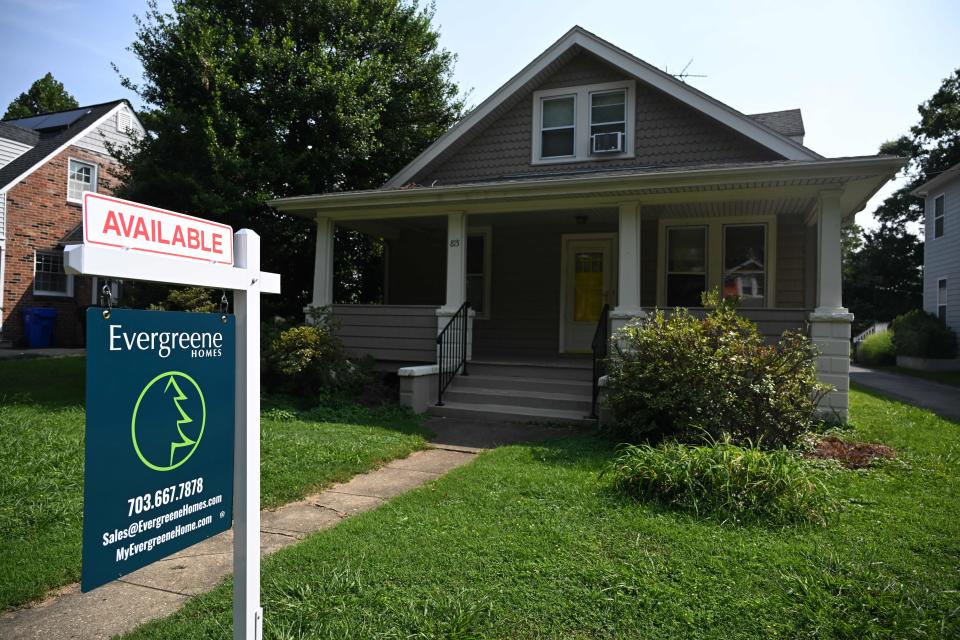It’s not financially smart to sell your house right now, and that math is bad news for homebuyers.
A new analysis that examines all current mortgages drives this point home.
For more than two decades a buyer moving up to a pricier home would pay roughly $400 more to purchase a home that was 25% more expensive than the house the buyer sold.
According to Intercontinental Exchange Inc. (ICE), such a buyer would now have to swallow $1,384 more per month.
That gap is convincing many American homeowners to stay put, stunting the number of homes for sale and buoying prices on the paltry supply that exists.
“That average homeowner’s mortgage payment would need to more than double today to gain just 25% in property value — hardly an entertaining proposition,” Andy Walden, ICE’s vice president of enterprise research strategy, wrote in the analysis.
“That said, you’d be hard-pressed to find a more vivid illustration of the lock-in effect that’s kept for sale inventory in a hole for the last few years.”


‘Larger payment shock’
The math gets even worse for potential move-up buyers who took out mortgages in 2020 and 2021, either by buying or refinancing when mortgage rates were at or near historic lows.
A lateral move would mean shelling out 60% more each month, or about $804 more on average, ICE found.
For an upgrade, the monthly mortgage payment would be 132% higher than their buyer’s current mortgage, or $1,773 more on average.
Having more home equity is hardly a panacea, either. While homeowners came into 2024 with the largest volume of equity to start any year on record, according to Walden, that increased equity “also amplifies the percentage change in monthly payment when upgrading to a larger home.”
Take, for instance, two different homeowners with properties worth $300,000. Let’s say both are trading up for a house that’s worth $375,000, or 25% more than their current one. Homeowner A has $50,000 in home equity, which means he owes $250,000 on his current mortgage. Homeowner B has $150,000 in equity, owing $150,000 on her mortgage.
If both homeowners roll their entire equity into the purchase of the new home, homeowner A would see his outstanding mortgage increase 30% to $325,000 from $250,000. But homeowner B would see her mortgage balance jump 50% to $225,000 from $150,000.
“The second upgrading homeowner would still have more equity and a lower payment, but would also see a larger payment shock — on a percentage basis — given how advantageous and attractive their current mortgage payments are,” Walden wrote in an email to Yahoo Finance.
‘A compounding effect’
One of the keys to making a move-up purchase more palatable is lower mortgage rates. But rates are now above 7% again while more than three-quarters of homeowners with a mortgage hold a rate below 5%, according to a separate analysis from Redfin.
The outlook for mortgage rates doesn’t suggest much softening anytime soon. Investors are now betting on just two interest rate cuts this year from the Federal Reserve after inflation unexpectedly accelerated last month. In January, investors priced in seven rate reductions for 2024. The Fed’s benchmark rate indirectly affects the trajectory of fixed mortgage rates.
While inventory ticked up in February per ICE — sometimes folks have to move for a job, growing family, or divorce despite the rate environment — the supply of homes for sale is still 40% below pre-pandemic averages.
That sets the stage for bidding wars, sending prices higher — another disincentive for move-up buyers.
“Interest rates and sharply rising home prices are both having a material impact on trade-up costs and the lock-in effect,” Walden wrote, “with the two forces in tandem having a compounding effect.”
Janna Herron is a Senior Columnist at Yahoo Finance. Follow her on Twitter @JannaHerron.

















